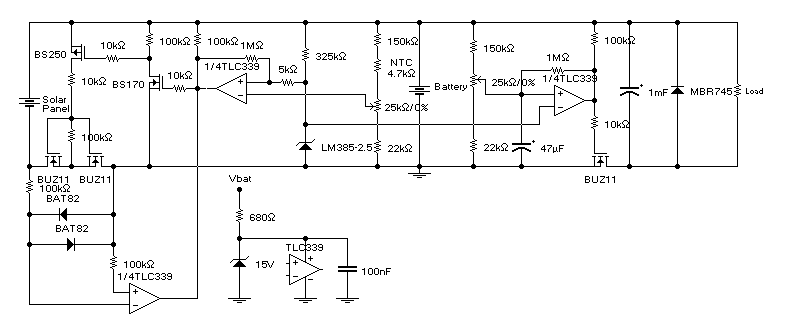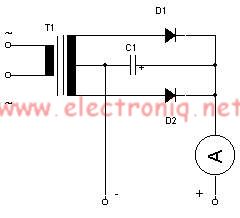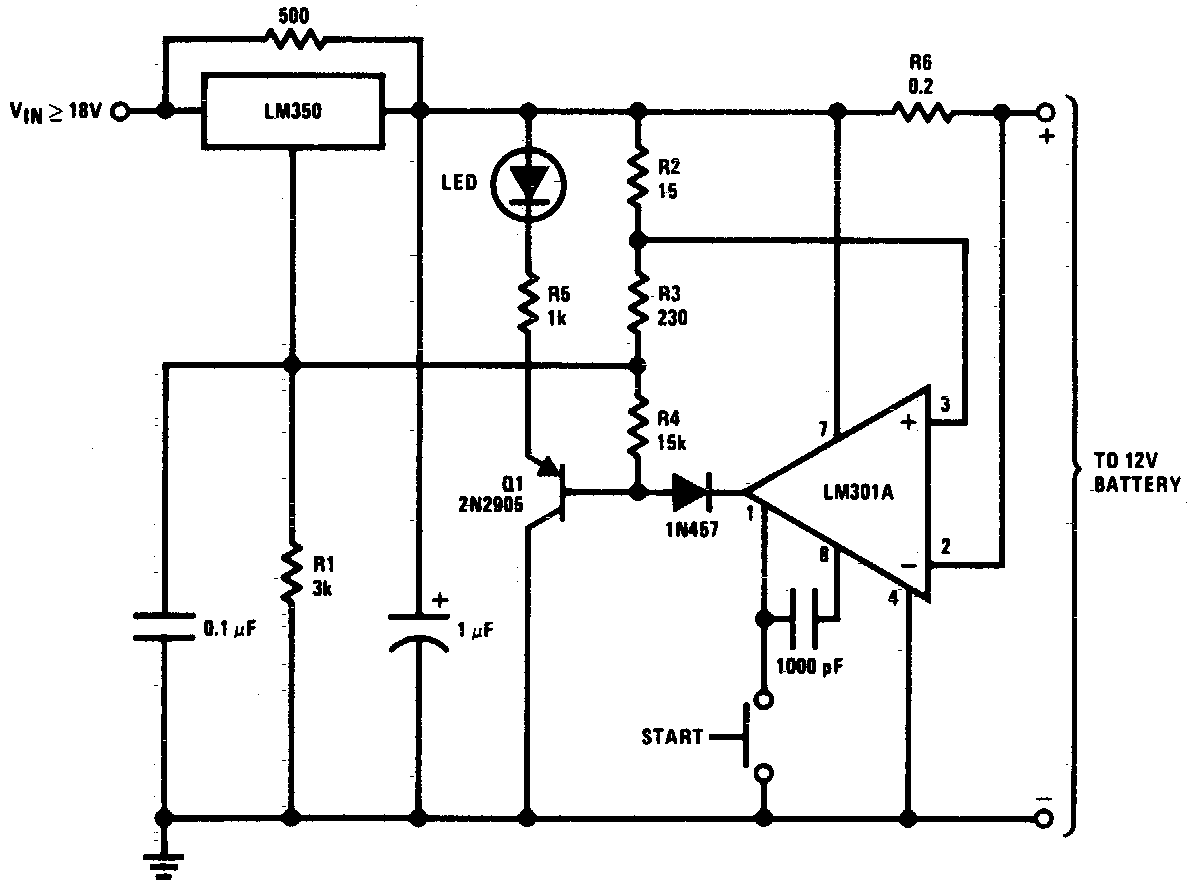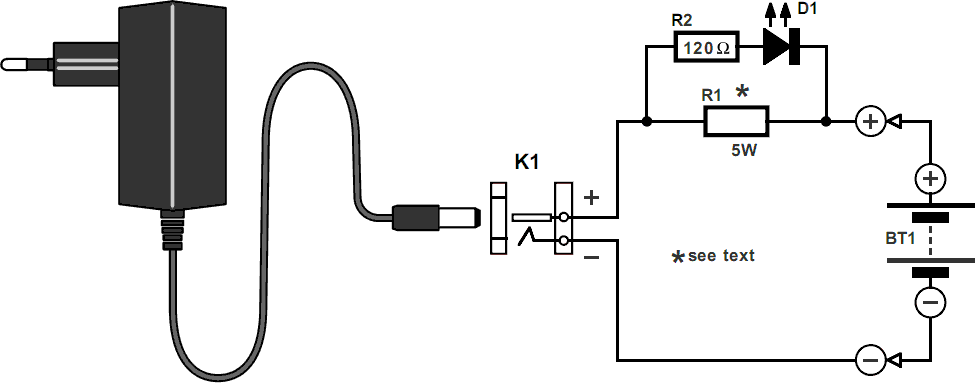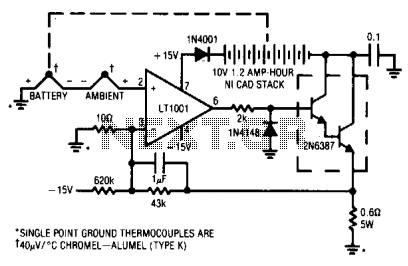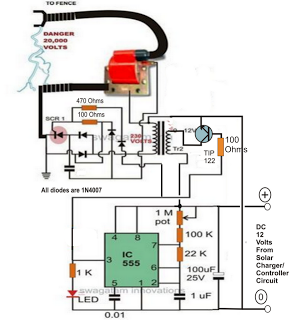
Alkaline Battery Charger
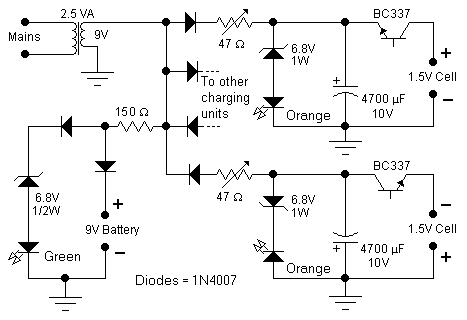
Alkaline Battery Charger. This circuit was specifically designed to recharge alkaline cells. The unusual connection of the transistor in each charging unit will cause it to oscillate.
The alkaline battery charger circuit is engineered to effectively recharge alkaline batteries, which typically require a specialized approach due to their unique chemistry. The primary components of this circuit include a power supply, a charging control unit, and a feedback mechanism involving a transistor that oscillates to regulate the charging process.
The circuit operates by converting the AC voltage from the power supply into a suitable DC voltage for charging the batteries. The transistor's unconventional configuration plays a crucial role in this process. It is connected in such a way that it creates an oscillating signal, which is essential for maintaining a consistent charging current. This oscillation helps prevent overheating and overcharging, which can damage alkaline cells.
Additionally, the circuit may include resistors and capacitors that work together to filter the output and stabilize the voltage. A diode is also typically included to prevent reverse current flow, ensuring that the batteries are charged efficiently and safely. The design may incorporate an LED indicator to signal the charging status, providing visual feedback to the user.
Overall, this alkaline battery charger circuit is a specialized solution that addresses the unique requirements of charging alkaline batteries, ensuring longevity and safety during the charging process.Alkaline Battery Charger, Battery Charger , This circuit was specifically designed to recharge alkaline cells. The unusual connection of the transistor in each charging unit will cause it to osci. 🔗 External reference
The alkaline battery charger circuit is engineered to effectively recharge alkaline batteries, which typically require a specialized approach due to their unique chemistry. The primary components of this circuit include a power supply, a charging control unit, and a feedback mechanism involving a transistor that oscillates to regulate the charging process.
The circuit operates by converting the AC voltage from the power supply into a suitable DC voltage for charging the batteries. The transistor's unconventional configuration plays a crucial role in this process. It is connected in such a way that it creates an oscillating signal, which is essential for maintaining a consistent charging current. This oscillation helps prevent overheating and overcharging, which can damage alkaline cells.
Additionally, the circuit may include resistors and capacitors that work together to filter the output and stabilize the voltage. A diode is also typically included to prevent reverse current flow, ensuring that the batteries are charged efficiently and safely. The design may incorporate an LED indicator to signal the charging status, providing visual feedback to the user.
Overall, this alkaline battery charger circuit is a specialized solution that addresses the unique requirements of charging alkaline batteries, ensuring longevity and safety during the charging process.Alkaline Battery Charger, Battery Charger , This circuit was specifically designed to recharge alkaline cells. The unusual connection of the transistor in each charging unit will cause it to osci. 🔗 External reference
